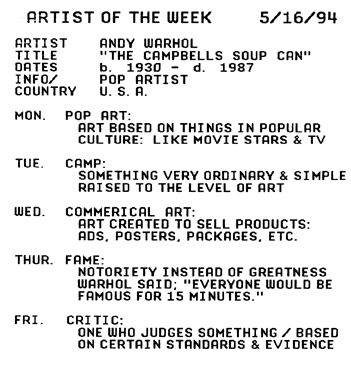 |
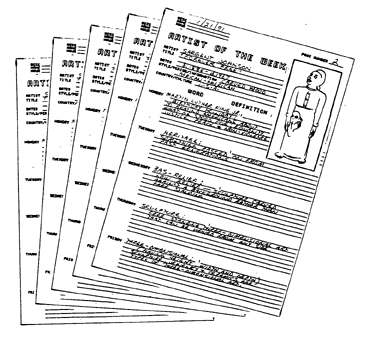
|
contact me at mailto:wduncan@kc.rr.com
my web site is http://www.taospaint.com
ARTIST OF THE WEEK LESSON PLAN
or HOW TO INFUSE ART HISTORY INTO
THE MIDDLE SCHOOL ART CLASSROOM
|
 |

|
|
|
|
| Conceptual Objective / this process will expose students to a range of artists, their work, and a related visual vocabulary over the course of study. | |
| Behavioral
Objective / each student will compile an art notebook with
information on select artists, related vocabulary and thumbnail sketches
of the artists work.
|
|
| Materials List / pre formatted artists of the pages, large exemplars of artists work, definitions related to the artist, notebook folders for each student, labels for notebooks, boxes for storage and a location that is accessible. |
PROCESS AND METHOD
| I choose different
Artists to present to my 6th graders, my 7th graders and to my elective
classes, I have three preparations for this portion of my program each
week. But, my 6th and 7th graders will change each quarter so I can use
the sets of artists for them again the next quarter, a total of four times
through out the year. Because my elective students remain with me for one
or perhaps two semesters, I use a new artist each and every week. Since
a student might be in different elective art classes this year and next,
I am careful not to repeat an exemplar for two or three years. I simply
staple a list on the wall each year to remind me when I last used that
particular artists work.
|
I like to leave
images and related words on display for the entire nine weeks. This is
so I can refer to certain examples of concepts in the work and for a review/test
an the end of each quarter. On my review/tests students must rely on their
notes and any other material we have added to the notebooks over the course
of the nine week period. After the initial presentation about each artist
on Mondays, I relocate the exemplars to a tack strip around the top of
the room. By the end of each quarter I have at least (3x8) 27 exemplars
on display around the room.
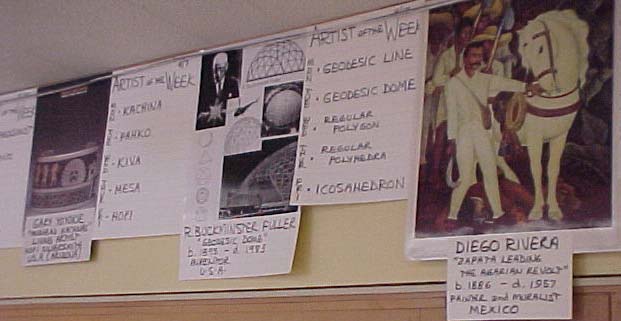 |
| In an ideal situation an art teacher would present an exemplar each Monday that tied into the specific concepts and problems being covered in a particular art class. But in reality I have only so much time to organize and there are limits to my display space. So, I choose exemplars that tie in closely when possible. Then I introduce additional closely related exemplars during specific lessons as needed. In addition, each table in my classroom is named after a famous women artist. That means I sneak in eight more exemplars in the short nine weeks. |
VOCABULARY IS AN IMPORTANT PART OF THE KNOWLEDGE BASE IN ART
|
|
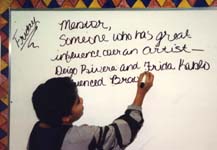 |
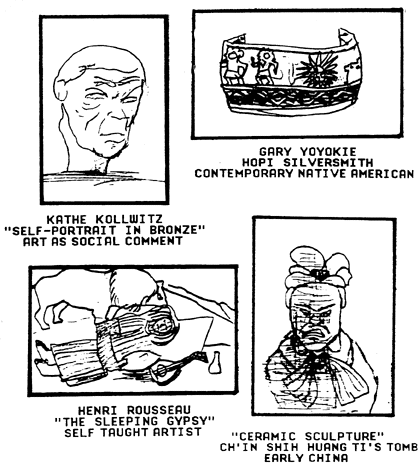 |
I have included
examples of thumbnail drawings from student notebooks done in 1994. I choose
that year because I recently had a visit from Manivanh, in college now,
talking about the good times in art at Rosedale.
When students do good work on these little "memory drawings" I try to xerox them and make posters for display. It motivates even more and better work from others. |
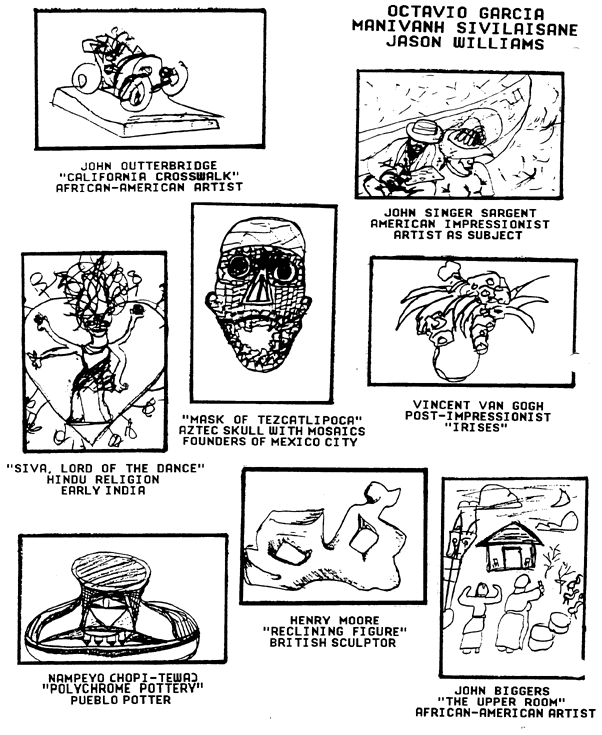 |
|
|
END